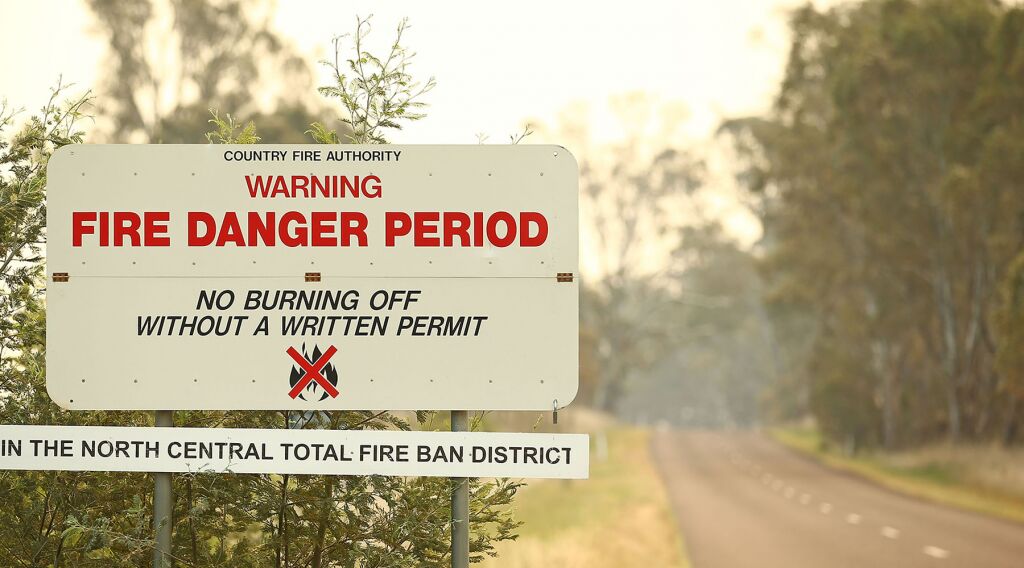
Fire and Floods Boil Australia
Australia is being baked and boiled as the nation is hit by fires and floods in the same week.
An enormous patch of hot air lingering over central Australia has bled to the coasts, causing record-breaking—or rather, record-baking—temperatures across the nation.
Remote towns in Queensland recorded the hottest February on record, sitting at 117 degrees Fahrenheit. The worst off was New South Wales. Sydney saw temperatures above 105 degrees Fahrenheit for days on end, making it officially the hottest summer in the city’s 158-year recorded history.
Rolling blackouts were enforced across South Australia as energy suppliers struggled to keep up with the demand air conditioning and refrigeration units put on the grid.
Fire
With the heat came fires. This week, Australia hit its maximum official fire danger level: catastrophic.
On February 12, the Australian state of New South Wales alone saw almost 100 separate bushfires. As Rural Fire Service commissioner Shane Fitzsimmons said, “This is the worst day we’ve seen in the history of New South Wales when it comes to fire danger ratings and fire danger conditions.”
Over that weekend, at least 30 houses were destroyed, with more areas still to be assessed. Residents of the small community of Uabry returned to find the entire community wiped out. Some residents were left with nothing but the shirt on their back.
The efforts of firefighters have not only been hampered by extreme heat and wind, but also by arsonists. A number of men and teenagers have been arrested for deliberately starting fires.
Flooding
The irony is, when the rains do come, they come too strong. While eastern Australia burned, Western Australia saw floods. Towns in the southern regions of the state were cut off as rivers burst their banks and cut supply roads.
While still early, estimates put the damages at over $100 million.
Two men swept away by floodwaters have been confirmed dead.
New Zealand Still Reeling
Across the Tasman Sea, New Zealand is faring only a little better.
Last week, fires destroyed at least 11 Christchurch homes and burned 1,850 hectares of land. Hundreds of residents were evacuated as 130 firefighters, 14 helicopters, three planes and additional pump and tanker crews struggled to contain the inferno.
A civil state of emergency was called in Christchurch and Selwyn. At least one person has been killed so far.
The region is still getting to its feet after earthquakes late last year. A 7.8-magnitude quake rocked the island nation in November. Then a 6.2 quake and hundreds of aftershocks rippled through the country. The repair costs are soaring into the billions.
As recently as last week, the nation has experienced 5.2-magnitude quakes. While no more major damage has been caused, it is a reminder of the constant threat of a serious disaster in the quake-prone land of the long white cloud.
Why?
Last year, Australia was battered by severe storms—before that, crippling drought. In 2011, it was major flooding. In the same year, New Zealand was hit with a terrible earthquake in Christchurch, leading to the deaths of at least 181 people.
It is not just Australia and New Zealand hit by these disasters. In the last 12 months, the global community has seen its share of disasters. As the Washington Post wrote in November 2016, “The 2016 Atlantic hurricane season officially ends on Wednesday. … The overall activity was the highest we’ve seen since 2010 and included several record-breaking events. It may have also been the deadliest hurricane season since 2005, with perhaps 1,700 or more fatalities.”
To the south, Chile burned through the “worst fire disaster” in the nation’s history. President Michelle Bachelet told bbc, “Chile is living the greatest forest disaster in our history.” In Ecuador, more than 600 were killed in a 7.8-magnitude quake.
Central Italy was also rocked by a 6.2 quake in 2016 that killed more than 200 people. Then an avalanche in January claimed 29 lives. Shortly thereafter, an avalanche in Afghanistan claimed more than a hundred lives.
In North Korea, more than 130 were killed in 2016’s Typhoon Lionrock. During August, flooding in China left 181 people dead or missing as levees broke under heavy downpours.
The devastation of Hurricane Matthew saw numerous death toll reports ranging from 500 to 1,000 across the Caribbean.
The repercussions of these “natural” events are still being felt as families mourn the dead and communities rebuild their homes.
But why? Is it global warming and fault lines? That is certainly the easiest and most common opinion. Is this “natural” or the result of a few degrees of temperature and melting icecaps? Could there be another reason?
Of course, as late Trumpet columnist Ron Fraser wrote in “Why Have Natural Disasters Increased?”, this understanding is muddied and ridiculed because of “kooks, screwballs and fanatics out there who instantly seize on the latest catastrophe to declare ‘the end is nigh.’”
He explained:
Doomsayers have been doing this for years. Far too many get involved in such activity for personal profit. They peddle their scaremongering by taking advantage of vulnerable people and, for a price, promise to show a way that the gullible can escape the wrath of their god, the next disaster, creatures from outer space, the end of the world, the implosion of the universe or some other such wacky idea. They make it doubly hard for the genuine seeker after truth.
But for those who believe the Bible, there is irrefutable proof that God does control the weather for a reason. He warns and tries to get our attention through these extreme weather events.
https://www.youtube.com/watch?v=i0mSItxcvXs&feature=youtu.be&t=57s
For the biblical truth behind natural disasters and extreme weather conditions, read our free booklet Why ‘Natural’ Disasters? and watch our Key of David program of the same name.
